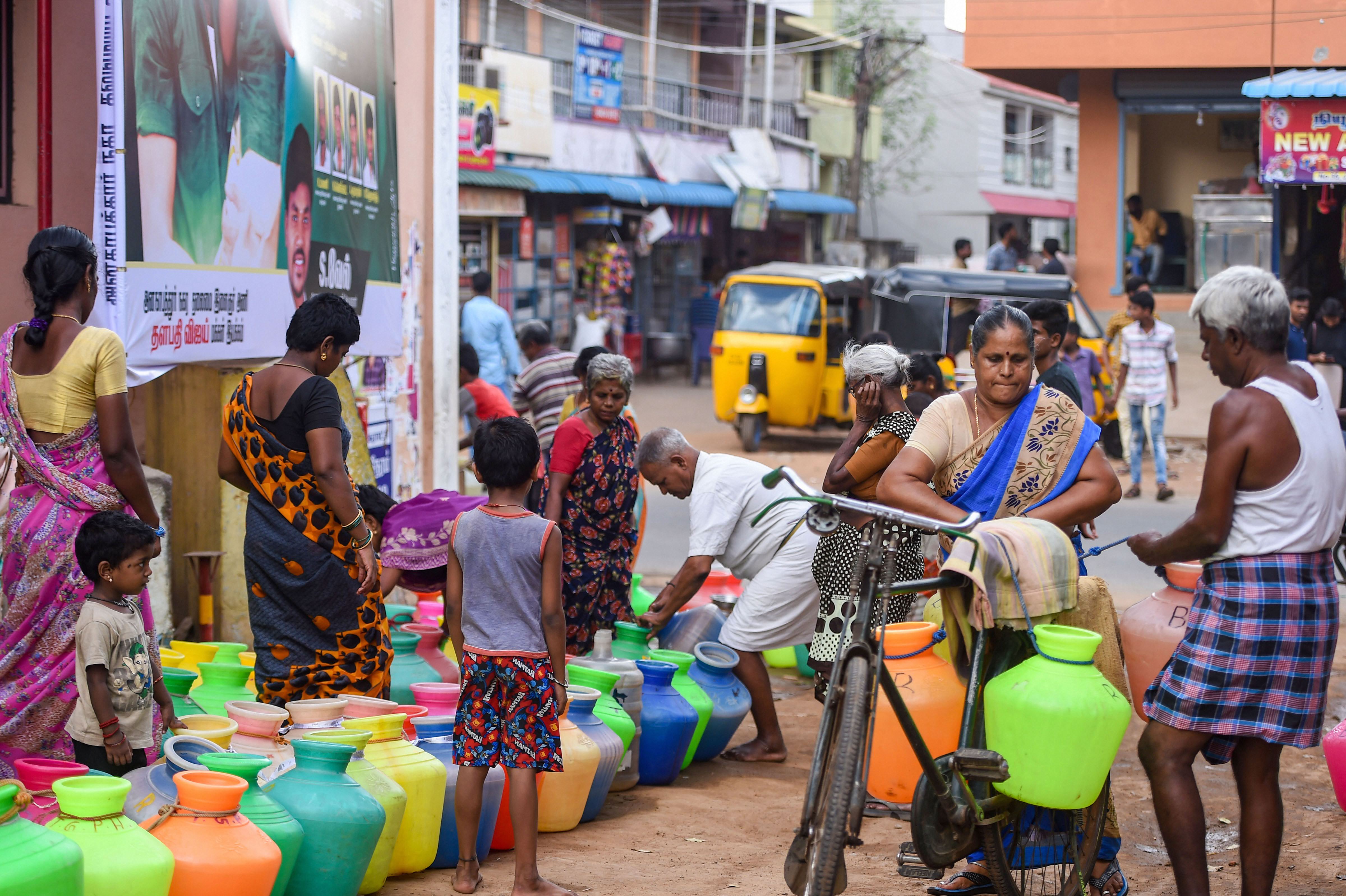
Chennai water crisis man-made, but still can be reversed

Everyone is screaming about water crisis, especially in Chennai, pointing their fingers at someone else. Look at Cooum and Adyar, these rivers did not turn into big drainage canals overnight! We did not hear any screams, did we?
Let us step back and analyze what led us to the current situation. Understanding the problem is the first step to solving it. We have to start somewhere so why not with the elected officials first? Their negligence and indifference towards water management have been the root cause. For many decades, irrespective of who was elected and who led the government, they paid no attention to the water resources and management.
We can easily ask, how many of the reservoirs, lakes, rivers, and ponds have been cleared of trash and maintained by the government? In Tamil Nadu, there were nearly 40,000 lakes and ponds, both natural and man-made, and half of them supposedly maintained by PWD and the rest by the local panchayat. Where are these lakes and ponds today?
To add to the blame, the government is guilty of allowing unplanned construction on the water beds and on the channels supplying the water. Now let us turn to ourselves, the people. We are not in the clear either.
First of all, we are to be fully blamed for not conserving water as we should have done always, second for pumping a lot of ground water (without replenishing it) to the point of completely depleting it, third we are the ones building houses on water beds and blocking the water channels, fourth for throwing away trash into river and other water beds.
The list goes on. There is plenty of blame to go around. Why don’t we look at how to come out of the current crisis and solving the water problem permanently? The government may or may not have the money to resurrect all 40,000 lakes and ponds in the short term. But definitely, it has access to the resources. Desperate times call for desperate measures.
What can the government do immediately – near term and long term?
Near Term
- Negotiate in good faith with Karnataka, Andhra Pradesh, and Kerela for water and bring water to Chennai and rest of Tamil Nadu.
- Mobilize and incentivize the National Service Scheme (NSS) students in Tamil Nadu. There are more than 4-Lakh students in Tamil Nadu, ready to serve the people.
- Incentivize schools and colleges to adopt the nearest lake or pond and clean it and maintain it.
- NSS students involved in maintaining ponds/lakes get additional percentage point to their marks for admission to colleges for further studies.
- PWD must ensure that river water is directed to fill all these ponds as soon as water is released in rivers.
Long Term
- Construct lot of water treatment plants to treat the drainage and industrial waste and permit only clean and clear water to be released into rivers – Cauvery is turning into Koovum of Tamil Nadu right in front of our eyes today.
- Clear all water channels and maintain them so all lakes and ponds get replenished every year.
- Construct lot of check dams across all rivers so water can be stored without affecting the water life like fish and other creatures.
- Construct many desalination plants for harvesting drinking water as well as salt, so saline concentrate is not let into the ocean.
- Regain water beds, all the 40,000 lakes, ponds and rivers.
- Impose strict fines and jail time for people and industries that may dump trash or industrial waste into water sources.
- Encourage rain water harvesting in all households to replenish ground water and prevent sea water from entering inland – currently sea water has infiltrated about 40 Kms inland near Thanjavur. It is estimated that Thanjavur will be permanently destroyed around 2025-2030 by sea water infiltration.
What can people do immediately?
- Conserve water.
-Fix leaky faucets and taps.
-Don’t let tanks overflow. Install float valves.
-Don’t use running water for brushing teeth or taking shower.
-Direct water from dish washing and cloth washing to backyard gardens. - Do NOT throw away trash into water beds like rivers, lakes and ponds.
- Volunteer to clean and maintain local lakes and ponds, and assist the NSS volunteers.
- Harvest rain water.
- Implement Zero-Cost Rain water Harvesting to replenish ground water.
- Use Zero-Cost Rain water Collection for domestic use – Reverse Umbrella Technique (RUT) for rain collection.
- Conserve ground water. Don’t pump ground water more than necessary.
In another couple of months, monsoon will begin and we can expect rain, however small it may be. Don’t let it go down the drain. Let us stop blaming others and start taking responsibility for the current water situation.
Act Now, Save Ourselves, Save our families and Save our neighbors.
(Richard Sekar is an entrepreneur based in the US.He spends most of his time educating students on innovation and entrepreneurship and in creating awareness about zero-cost rain water harvesting.)
(The Federal seeks to present views and opinions from all sides of the spectrum. The information, ideas or opinions in the articles are of the author and do not reflect the views of The Federal.)

